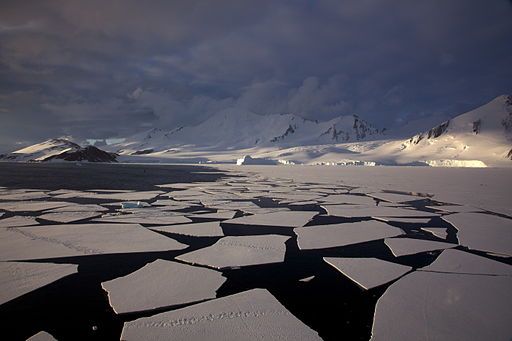Could global warming be creating more ice?
One common depiction of global warming is the melting of the ice caps. As the temperature rises, the ice caps melt - it's as simple as that, isn't it?

One common depiction of global warming is the melting of the ice caps. As the temperature rises, the ice caps melt - it's as simple as that, isn't it?
Last week, climate change computer models indicated that Antarctic sea ice coverage had reached a record high. This went completely against the projected correlation, which suggests that they should be reducing. The NASA-funded Data Centre revealed that an area of 16 million sq km is now being covered - more than two million above expected levels.
Currently, there is an acceptance within the scientific community that understanding about this trend is insufficient. Although some experts have suggested that global warming could somehow be responsible, research so far has proved unconvincing. Another idea is that there are periodic cycles in ocean temperatures, which could have been responsible for the historic decline pattern of arctic ice and are now reversing this trend.
There is still, however, the maintained belief by many that current figures with regards to the area of ice are insignificant. This is due to the fact that much of the new ice is fresh water frozen from the melting of the older ice caps - this is less dense and thus more prone to melting during warmer periods of the year. Quite simply, although the coverage may be reaching record levels in the cold season, during the melt there is far less resistance.
Indeed, the warnings coming from experts over the potential devastating impact of the melting ice caps remains as severe as ever. During the United Nations' Bonn Climate Change Conference last month, polar scientists appealed for the drastic reduction in emission in order to give low lying countries a chance to prepare for the rising sea levels. This is especially crucial with the melt trend being described as irreversible, giving a sense of inevitability to future events.
With the danger now seen as a direct threat to countries like the US and China, action is starting to finally accelerate from its previous glacial pace. Both of these global superpowers - key carbon emitters - have recently announced potential carbon emissions cuts. It has been said that people in Florida especially are becoming increasingly aware of the danger posed to them by the current trend of ice cap melts and rising sea levels.
Even for those who reject that humans are responsible for global warming, cutting carbon emissions is still a key approach to limiting the impact of the temperature rise. We are now at a stage where incremental changes can hugely shift the prospects of life for future generations. Further warming of any kind will speed up the process and thus, whether we take overall responsibility or not, we need to do whatever possible to limit our impact on the rising temperatures.






